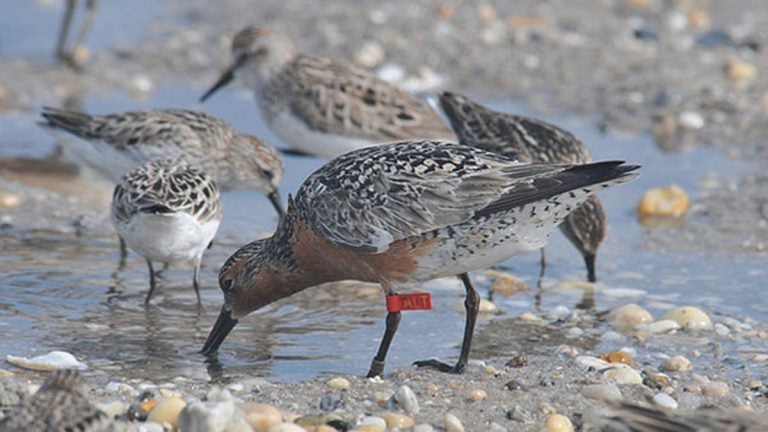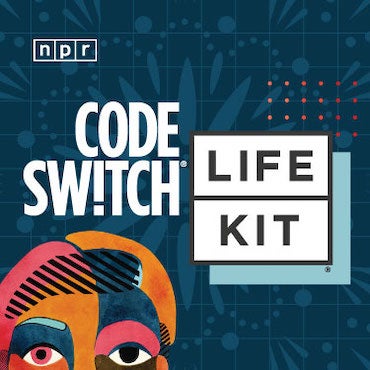U.S. Fish and Wildlife Service adds Rufa Red Knot to endangered list

Delaware Bay beaches that host a migrating shorebird for a few weeks each year will get more protection as a result of the federal government’s listing of a subspecies of the red knot as threatened under the Endangered Species Act.
The U.S. Fish & Wildlife Service said on Tuesday it had decided to protect the Rufa Red Knot because its habitat is increasingly threatened by the effects of climate change such as bigger storms and sea-level rise, as well as by coastal development.
The listing, which had been expected, ends years of pressure from environmentalists who have argued that the bird is on the brink of extinction, and needs federal as well as local protection along the bay beaches.
The robin-sized bird, 10 inches long and weighing less than 5 ounces, has become a cause celebre for local environmentalists because they live near the beaches that hold the key to the bird’s survival.
The number of the birds passing through the bay on migration each spring has edged off its low and has now stabilized, thanks mostly to restrictions on the harvesting of horseshoe crabs, whose eggs provide essential food for the birds during their migratory stopover.
But environmentalists argue that the population is still well below the level where it could survive major disruptions such as severe weather in the bird’s Canadian breeding grounds or development in wintering areas in southern South America, while it is now additionally threatened by the effects of climate change.
“It’s gone up a little but it’s still extremely vulnerable,” said Jeff Tittel, director of the New Jersey Sierra Club.
Tittel argued that the knot, with its dependence on beaches that are steadily being diminished by rising sea levels, is an indicator of broader effects of climate change.
“Unless we do something about climate change, many beaches may disappear, destroying horseshoe crabs, red knots, and Delaware Bay Shore communities,” he said.
On the Jersey and Delaware sides of the bay combined, the number of birds seen in an aerial survey at the peak of migration this spring was about 25,000, up from a low of about 15,000 in 2003, but some 70 percent below the 70,000 to 90,000 usually seen during the 1980s, according to the FWS.
Although the listing will eventually offer additional protection for the bird in areas where federal agencies such as the U.S. Army Corps of Engineers are working, it’s unlikely to have a major effect on conservation efforts, which are already active in New Jersey, said Wendy Walsh, senior biologist in the New Jersey field office for FWS.
“As a practical matter in New Jersey, it is unlikely that you are going to see radical measures in how it’s protected,” she said.
But in an effort to help the bird’s habitat survive sea-level rise and storms, state and federal officials will continue their successful beach-nourishment projects, and will seek to build on natural processes such as storms that change coastlines in ways that can create suitable habitat for the birds, Walsh said.
The knot depends on the Bay beaches to rest and refuel during its long-distance migration from South America to Arctic Canada each May. Without abundant horseshoe crab eggs from the Delaware Bay, the birds may not be able to complete their northward migration or to breed successfully, scientists say.
In early 2013, New Jersey officials scrambled to restore Bay beaches that were destroyed by Hurricane Sandy the year before, in the hope of providing spawning grounds for horseshoe crabs in time for the birds’ arrival in May.
To protect the crabs, which were overharvested during the 1990s, New Jersey banned the harvest in 2008. The ban was challenged by State Senator Jeff van Drew who introduced a bill to provide an exemption for 35 commercial fishermen who would be allowed to gather a limited number of male crabs but only by hand, and only from coastal meadows, not beaches.
The bill is still in committee but is not expected to progress further because it has been misunderstood as an attempt to reverse the ban overall, van Drew said. The bill was never intended to weaken any protection for the red knot, he said, welcoming the new FWS listing.
“I don’t expect it to move forward because of the volatility of the issue that requires a real evaluation of what the bill does,” he said.
The “threatened” designation means the bird may become endangered in most or all of its range, the FWS said.
“This hearty shorebird is no match for the widespread effects of emerging challenges like climate change and coastal development, coupled with the historical impacts of horseshoe crab overharvesting, which have sharply reduced its population in recent decades,” said FWS Director Dan Ashe, in a statement.
Complicating the conservation task is the changing global climate that may affect food availability at either end of the bird’s migration and consequently disrupt its ability to arrive on Delaware Bay beaches at exactly the right time to gorge itself on horseshoe crab eggs, the FWS said.
The migration, at some 9,000 miles each way, is one of the longest in the avian world.
The endurance of the species has been symbolized by one individual that birdwatchers have nicknamed “Moonbird” because it has flown more than the distance from earth to the moon since being tagged in 1995. The bird, believed to be at least 21 years old, was most recently spotted on a New Jersey beach during its northward migration this year.
The FWS said it reviewed some 1,700 scientific documents and heard more than 17,000 public comments before finishing its listing. In 2015, it will propose critical habitat areas after review of their possible economic effects, and will seek more public comments.
____________________________________________________
NJ Spotlight, an independent online news service on issues critical to New Jersey, makes its in-depth reporting available to NewsWorks.
WHYY is your source for fact-based, in-depth journalism and information. As a nonprofit organization, we rely on financial support from readers like you. Please give today.




